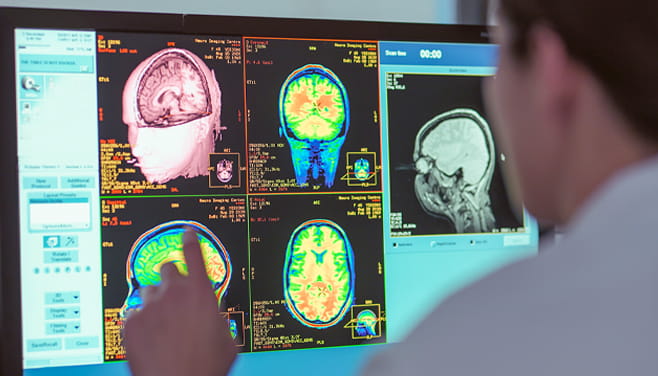Concussion Treatment & Management
Let Us Help You Find a Doctor
Let Us Help You Find a Doctor
U.S. PATIENTS:713.441.8277
Find a Specialist Near You
Houston Methodist Concussion Center experts are at the forefront of scientifically based treatment methods. We provide thoughtful care for your specific injury so you can return safely to your favorite activities or sports.
Our concussion specialists are experts at evaluating patients and recommending individualized treatment plans. Our multidisciplinary team focuses on helping you recover from head injuries and return safely to work, play and daily life.
Professional athletic teams, including the Houston Texans, Houston Astros and the Houston Livestock Show and Rodeo, trust our concussion specialists to care for them. Our experts care for elite performing artists as well as athletes from Rice University and other collegiate , high school and youth teams across Texas.
Concussion diagnosis may include a neurological examination, cognitive testing and imaging tests. Imaging tests such as CT scan or MRI can help diagnose potential complications, such as bleeding or swelling in your brain or skull.
Our concussion specialists are experts at evaluating patients and recommending individualized treatment plans. Our multidisciplinary team focuses on helping you recover from head injuries and return safely to work, play and daily life.
Professional athletic teams, including the Houston Texans, Houston Astros and the Houston Livestock Show and Rodeo, trust our concussion specialists to care for them. Our experts care for elite performing artists as well as athletes from Rice University and other collegiate , high school and youth teams across Texas.
Concussion diagnosis may include a neurological examination, cognitive testing and imaging tests. Imaging tests such as CT scan or MRI can help diagnose potential complications, such as bleeding or swelling in your brain or skull.
Concussion Treatment & Management
Learn More About Concussion
Healing After Concussion
This tip sheet offers quick information about safe recovery from a concussion.
Choose a Doctor at One of Our Locations
FILTERS:
Clear All Filters


